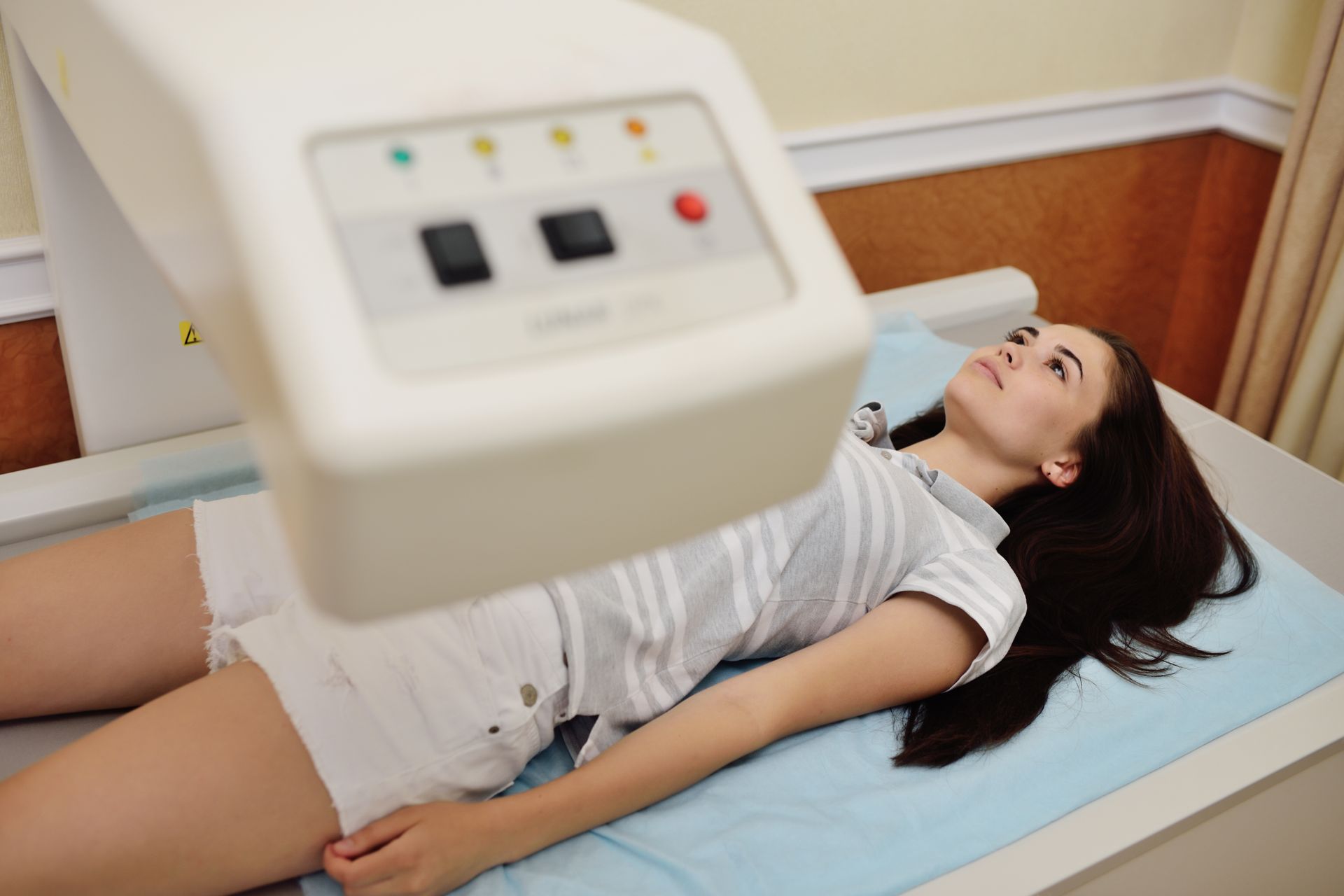DEXA for Metabolic Health


Dual Energy X-Ray Absorptiometry
Precise Technology to Assess Bone, Muscle & Fat
Duel energy Xray absotptiometry is an imaging modality that allows us to determine the density of human tissues using very low doses of Xray (200 times less than a chest Xray). The different tissues that can be differentiated and measured include:
- Bone- can be measured to assess the cause of stress fractures, such as low bone mass, osteoporosis and osteopenia
- Muscle- can be measured to assess rehabilitation gains and to help priotise and plan strength and conditioning programs
- Fat- the amount and distribution of fat can accurately be measured, including the “visceral fat”, which is a strong predictor of cardiovascular health and fatty liver disease
Testing can be conducted regularly to assess change and the effectiveness of treatments.
How does DEXA Work?
It works by passing two low-dose X-ray beams at different energy levels through the body. By measuring the absorption of each beam by bones and soft tissue, it can determine bone mineral density (BMD) and give detailed information about body composition, including muscle mass, bone mass, and visceral fat.
What are the risks of a DEXA scan?
While there is some radiation involved, at the low doses of X-ray used, it is a very safe test.
The radiation dose from a DEXA scan is low, significantly less than a standard chest X-ray. The effective dose typically ranges from 1 to 10 microsieverts (µSv), which is considered safe for regular monitoring. However, frequency of testing should be based on medical necessity and advised by a healthcare provider, usually ranging from every six months to every two years, depending on individual health risks and conditions.
What can DEXA measure and how accurate is it?
In terms of accuracy, DEXA is the gold standard for measuring BMD and is highly accurate for body composition measurements. It can detect changes as small as 1%, which is particularly useful for tracking small but significant changes in individuals at risk of osteoporosis or undergoing weight management programs.
DEXA is particularly beneficial for assessing muscle mass, providing precise measurements of lean tissue, which is vital for athletes and individuals monitoring physical progress or addressing muscle-wasting conditions.
For bone mass, DEXA's primary use is in the diagnosis and management of osteoporosis, allowing for the detection of weak bones before a fracture occurs and monitoring the effectiveness of treatment.
The technology is also adept at measuring visceral fat, the fat stored within the abdominal cavity. This is significant because excessive visceral fat is associated with a higher risk of metabolic diseases, including type 2 diabetes and heart disease.
What is the Cost of a DEXA scan?
The cost of a DEXA scan can vary depending on location, facility, and whether it is covered by insurance. Typically, it ranges from $50 to $300 per scan for those paying out-of-pocket. Body composition scans are generally considered elective, and not covered by Medicare or Private Health funds. However, Bone Density assessment as part of a medical workup for low bone mass may attract a Medicare rebate.








